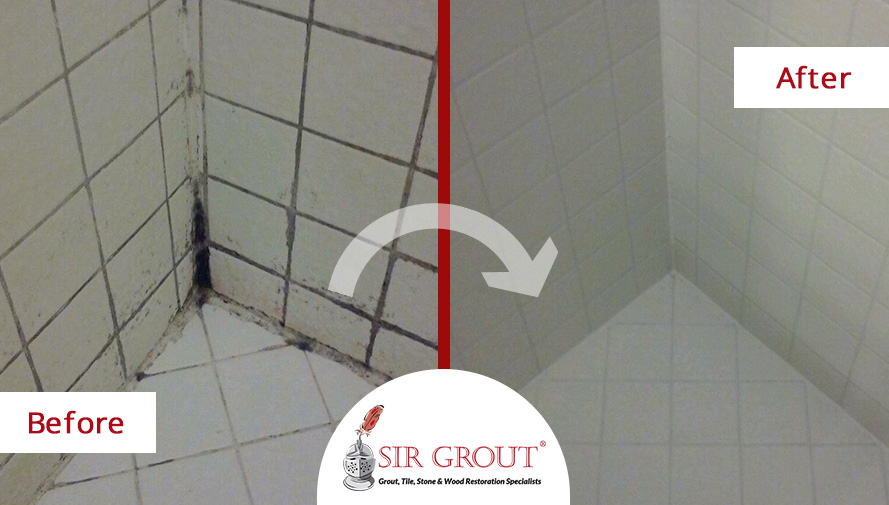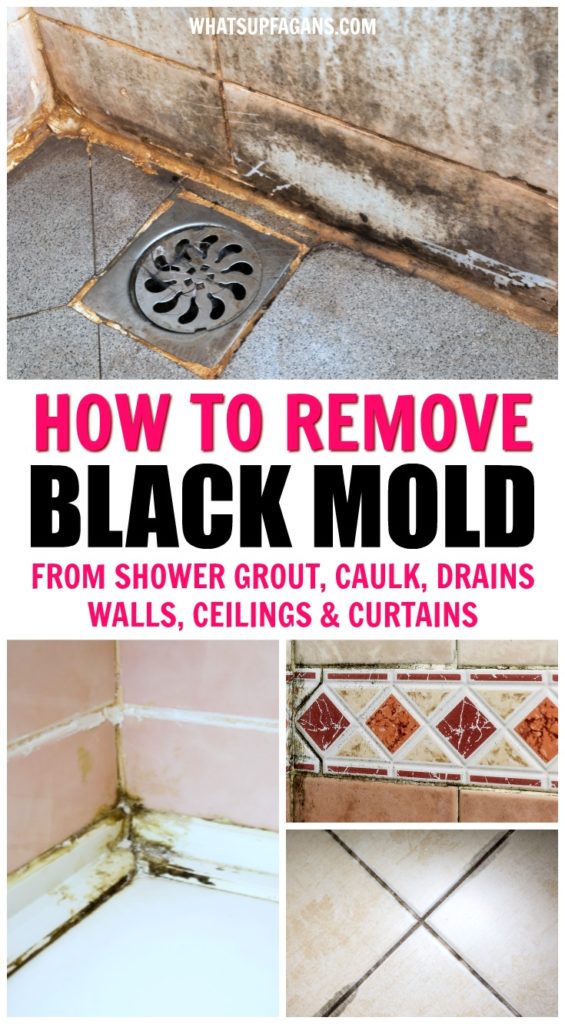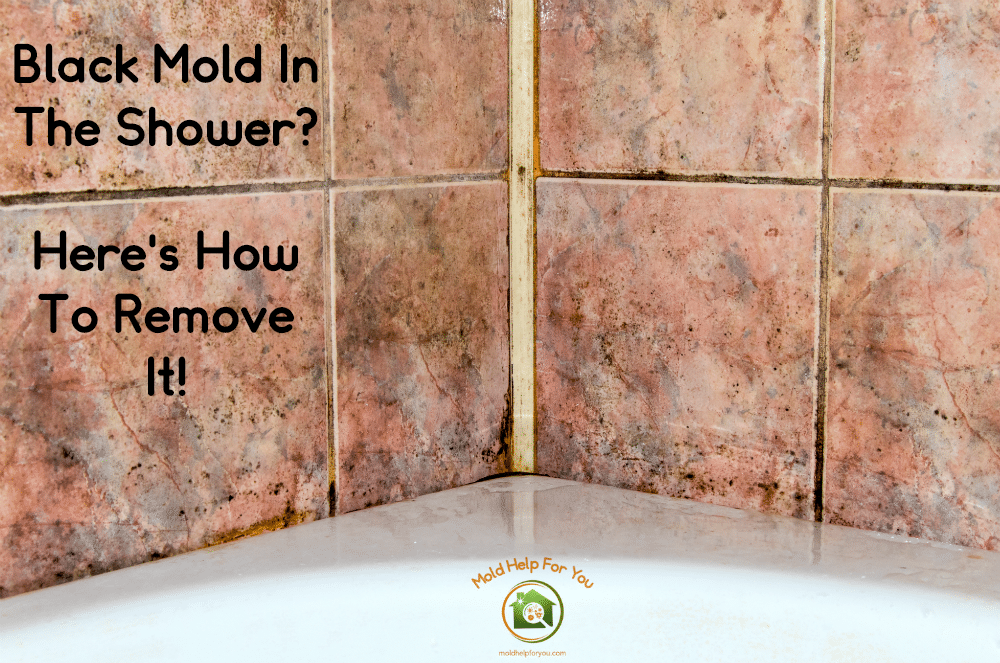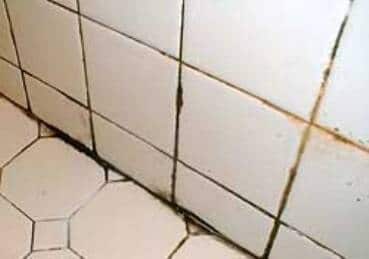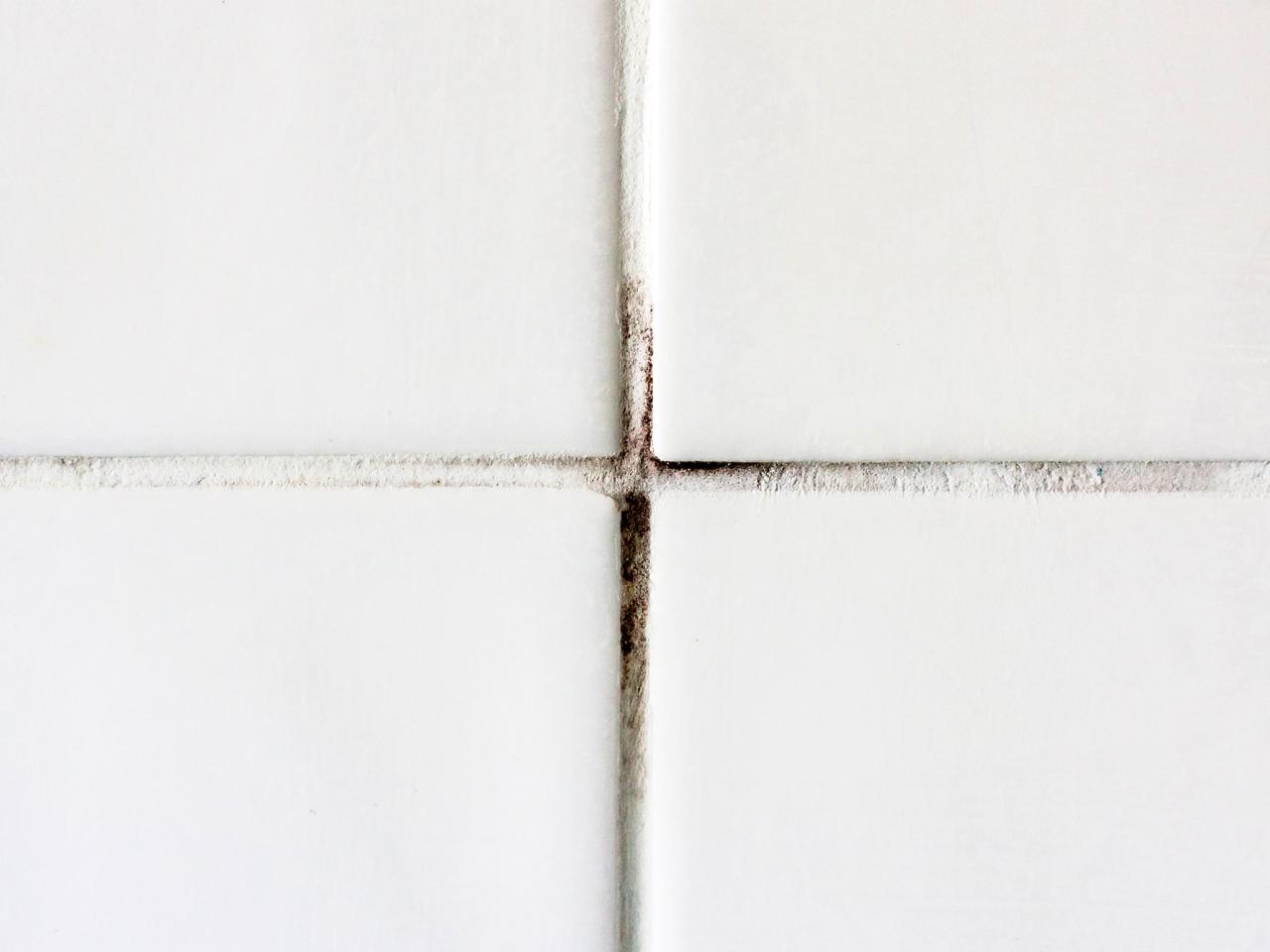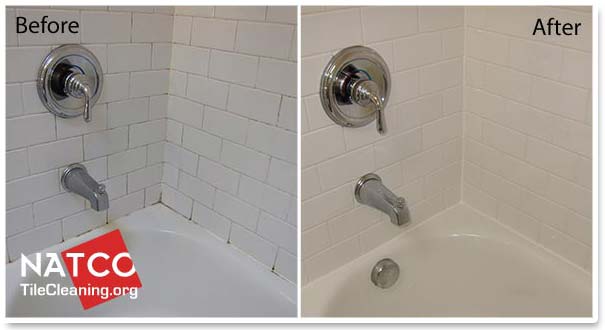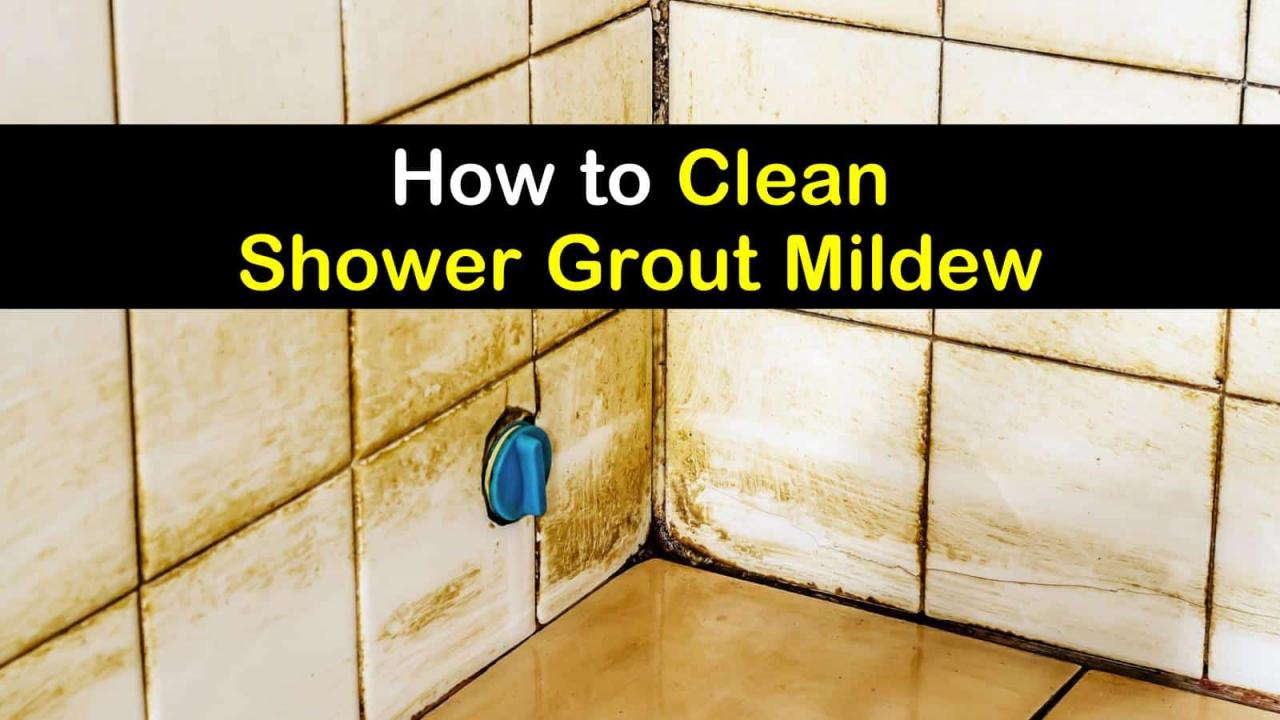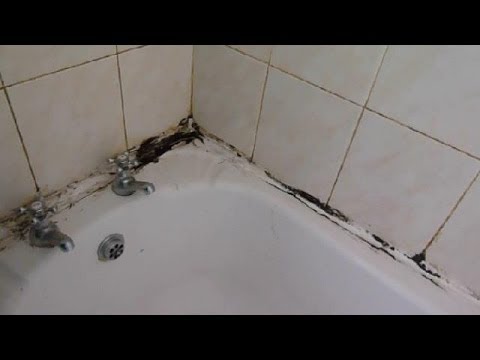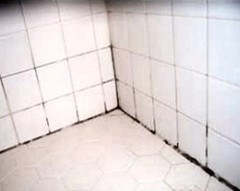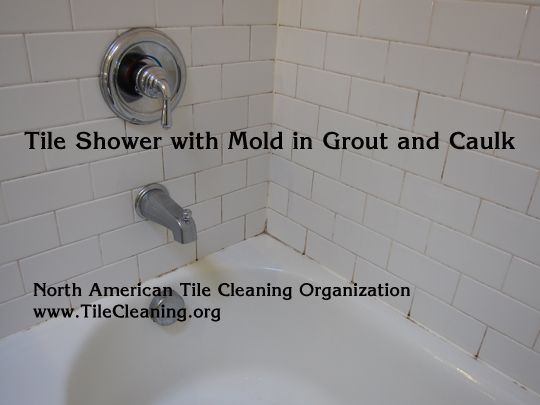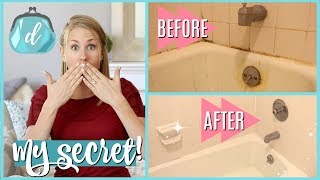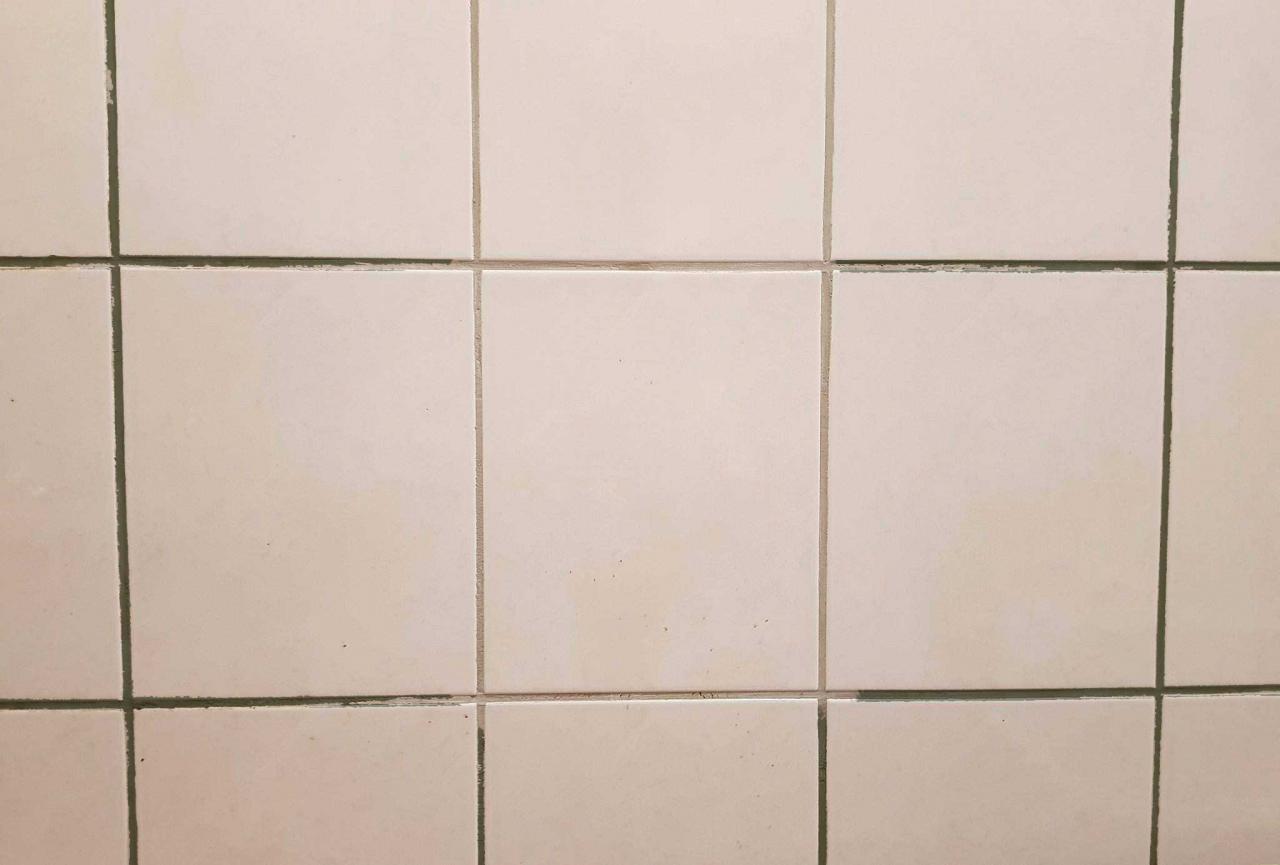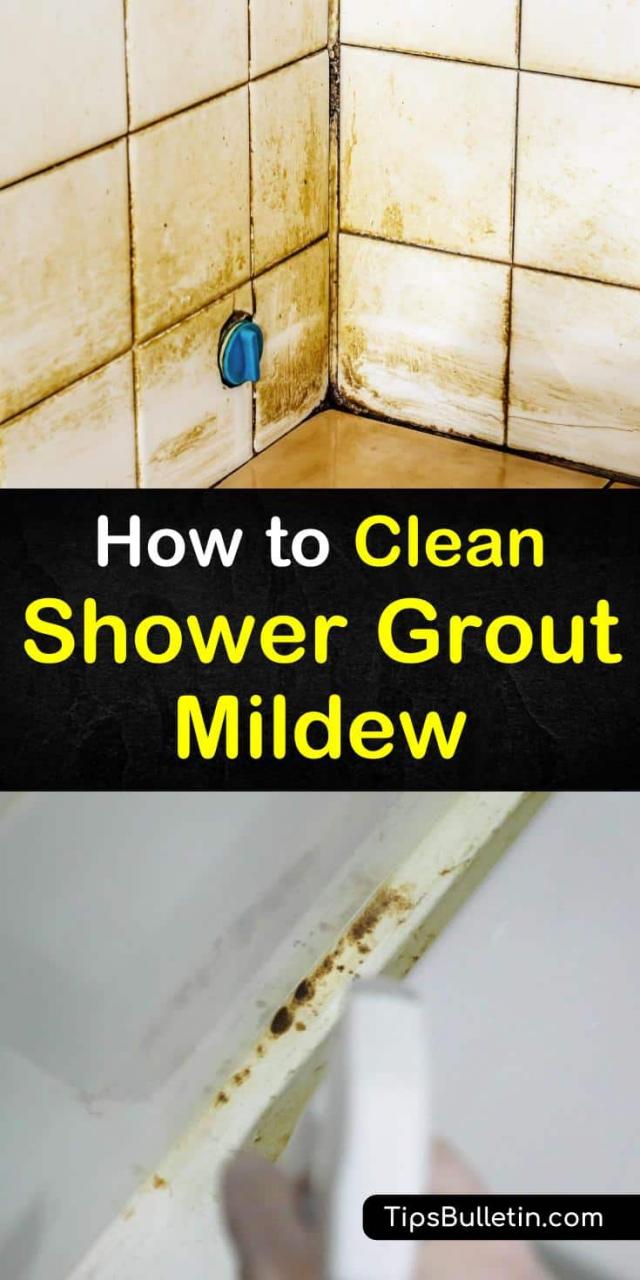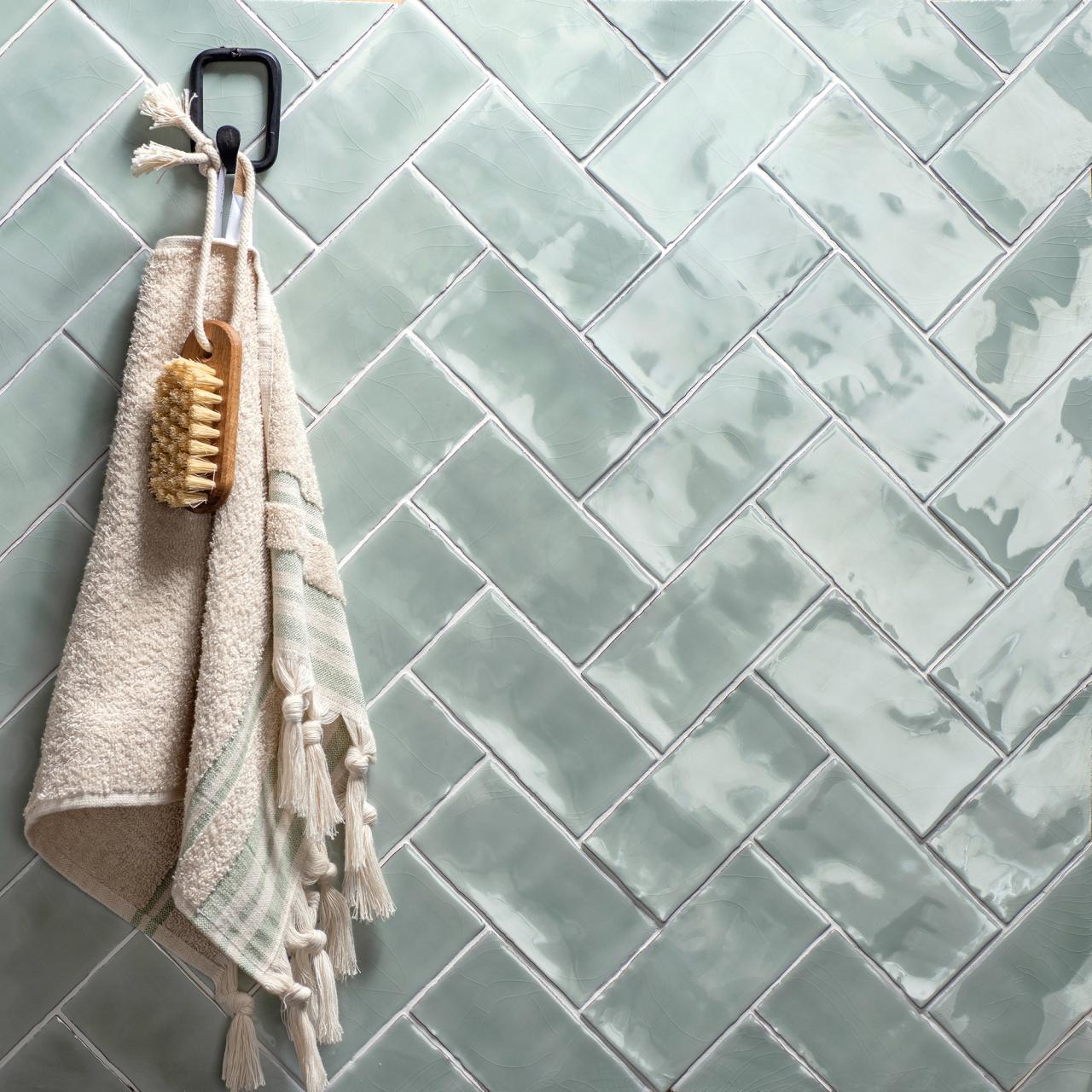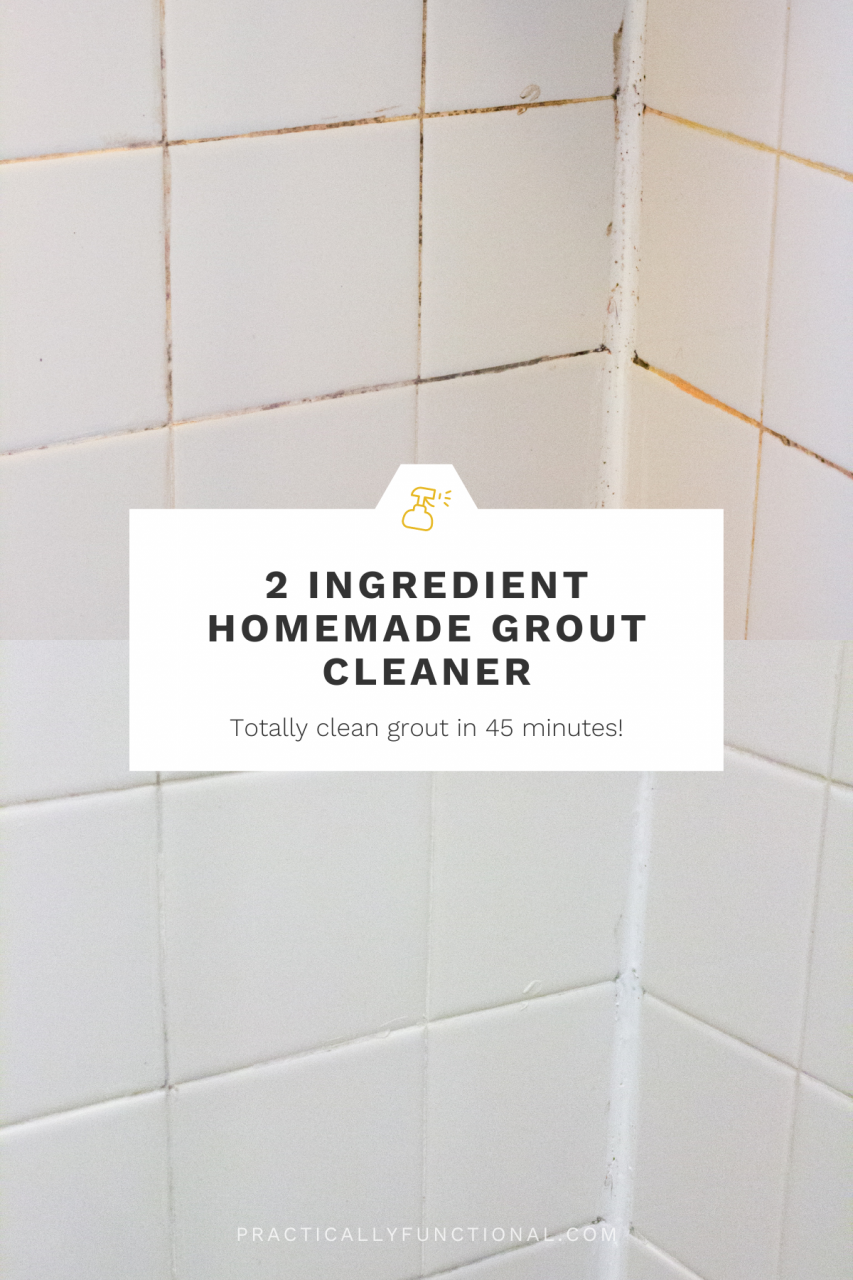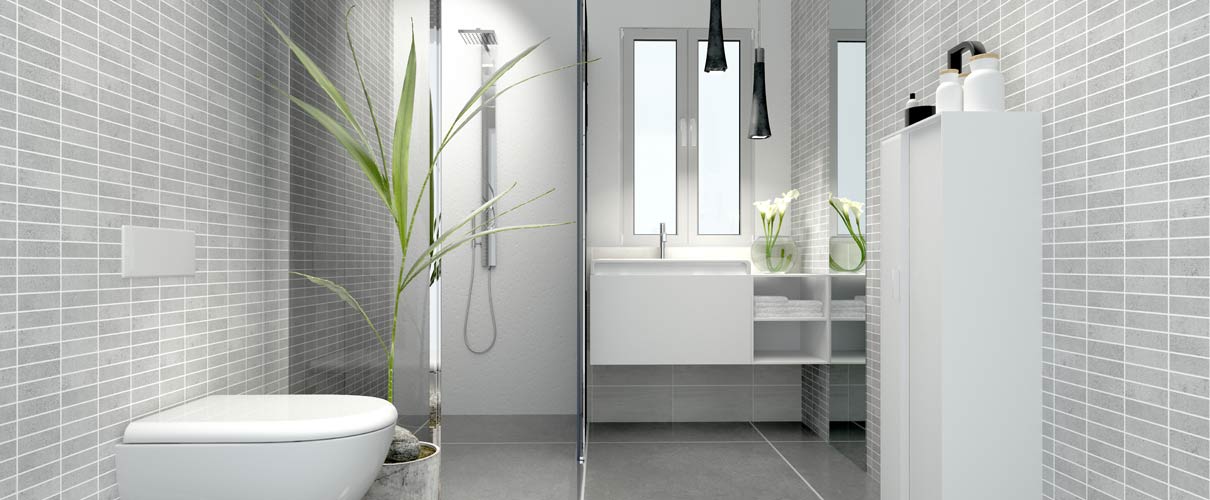Understanding the Causes of Mold in Bathroom Grout
Mold in bathroom grout is not only unsightly but can also pose health risks. Understanding the root causes of mold growth is essential for effective prevention and remediation. Let’s discuss the primary factors contributing to mold proliferation in bathroom grout, providing insight into how you can keep your bathroom mold-free.
- High Humidity Levels: Bathrooms are naturally humid environments, making them prime locations for mold growth. The constant presence of moisture from showers, baths, and sinks creates an ideal breeding ground for mold spores. When humidity levels exceed 60%, mold can begin to grow within 24-48 hours. Ensuring proper ventilation and using dehumidifiers can help maintain humidity levels below this threshold.
- Poor Ventilation: Inadequate ventilation exacerbates humidity issues. Without proper airflow, moisture accumulates on surfaces, including grout. Exhaust fans are crucial in bathrooms to expel moist air and bring in fresh air. Regularly using and maintaining these fans, along with opening windows when possible, can significantly reduce mold risk.
- Leaky Fixtures and Plumbing: Leaky faucets, showerheads, and pipes contribute to constant dampness, which promotes mold growth. Even minor leaks can lead to significant mold problems if left unaddressed. Regularly inspecting and repairing any leaks can prevent moisture from seeping into grout lines and other bathroom surfaces.
- Inadequate Cleaning Practices: Neglecting regular cleaning routines allows soap scum, body oils, and dirt to build up on grout lines, providing nutrients for mold. Using the wrong cleaning products can also leave residues that encourage mold growth. Consistent, thorough cleaning with appropriate products is essential to prevent mold from taking hold.
- Porous Grout Material: Grout is inherently porous, meaning it can easily absorb water and other substances. This porosity makes grout an ideal surface for mold spores to latch onto and thrive. Sealing grout lines with a high-quality sealant can help create a barrier against moisture and mold growth.
- Dark and Warm Environments: Mold thrives in dark, warm environments. Bathrooms, with their combination of warmth and often dim lighting, provide perfect conditions for mold to grow. Ensuring adequate lighting and maintaining a moderate temperature can help deter mold growth.
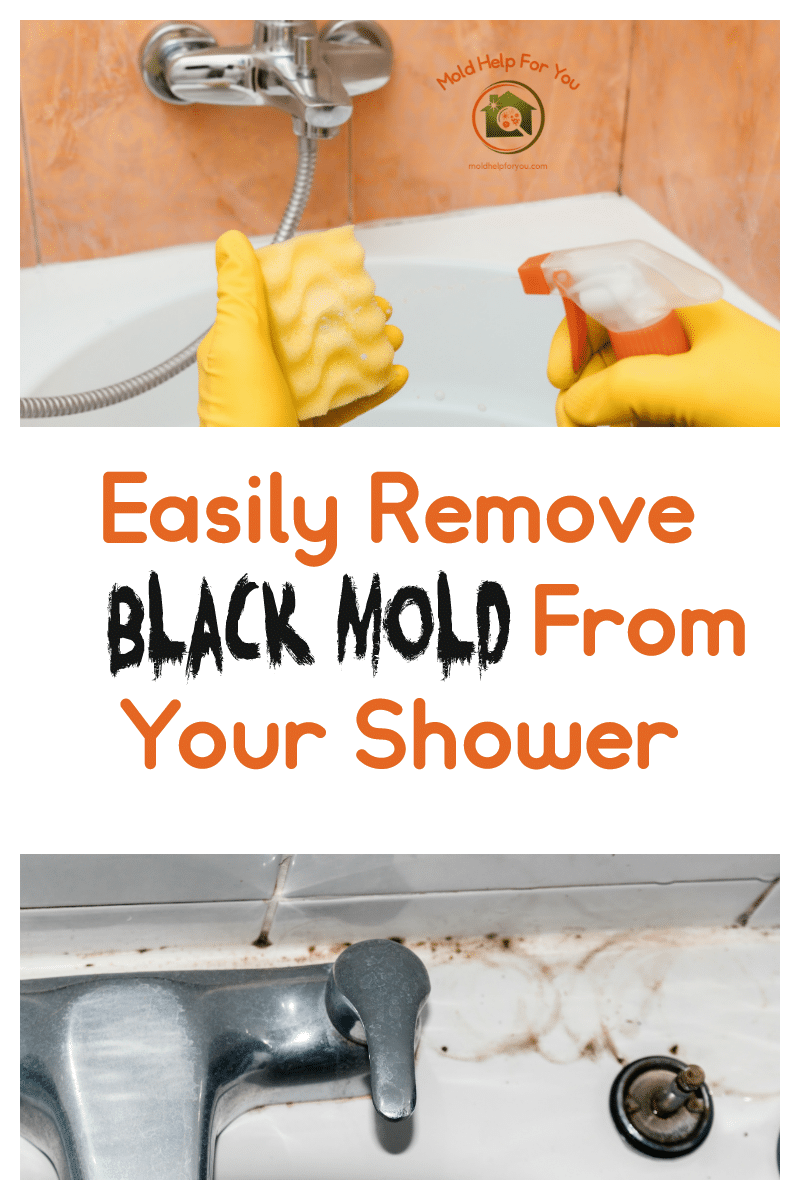
Essential Tools and Supplies for Mold Removal
Effective mold removal requires the right tools and supplies. Using proper equipment not only ensures thorough cleaning but also helps protect your health during the process. Below we outline the essential tools and supplies needed to tackle mold in bathroom grout, making your cleaning efforts efficient and safe.
Protective Gear
Safety should be your top priority when dealing with mold. Essential protective gear includes gloves, masks, and goggles. Gloves protect your skin from direct contact with mold and cleaning chemicals. Masks, especially N95 respirators, prevent inhalation of mold spores, while goggles shield your eyes from splashes of cleaning solutions.
Cleaning Solutions
Various cleaning solutions are effective against mold. Household items like white vinegar, baking soda, and hydrogen peroxide are excellent for homemade cleaning solutions. Commercial mold removers are also available and can be more potent for severe cases. Having a mix of these solutions allows you to choose the best one for your specific situation.
Scrubbing Tools
Stiff-bristled brushes are essential for scrubbing mold off grout. Toothbrushes, grout brushes, and scrub pads can effectively reach into the porous grout lines and remove mold. Electric scrubbers are also available for those who prefer a less labor-intensive option.
Spray Bottles
Spray bottles are useful for applying cleaning solutions evenly over mold-affected areas. They ensure that the solution penetrates deeply into the grout, enhancing the effectiveness of the cleaning process. Labeling your spray bottles can help you quickly identify the contents and avoid any mishaps.
Sponges and Cloths
Sponges and microfiber cloths are necessary for wiping down surfaces after scrubbing. They help remove any remaining mold and cleaning solution, preventing residue buildup. Using disposable wipes can also be an effective way to avoid cross-contamination.
Sealants and Caulk
After cleaning the mold, sealing the grout is crucial to prevent future growth. Grout sealants create a protective barrier that repels moisture. Additionally, having caulk on hand allows you to reseal any gaps or cracks in tiles and grout lines, further preventing moisture infiltration.
Preparing Your Bathroom for Mold Cleaning
Before diving into the task of cleaning mold from bathroom grout, proper preparation is essential. Preparing your bathroom ensures that the cleaning process is effective and that you can reach all mold-affected areas. Here is a comprehensive guide on how to prepare your bathroom for mold cleaning, setting the stage for a successful mold removal process.
Gather Necessary Supplies
Start by gathering all the tools and supplies you’ll need for the cleaning process. Having everything on hand before you begin prevents interruptions and allows for a smooth workflow. Ensure you have protective gear, cleaning solutions, scrubbing tools, spray bottles, sponges, cloths, and sealants ready.
Clear the Area
Remove any items from the bathroom that could obstruct the cleaning process. This includes toiletries, shower curtains, rugs, and any other accessories. Clearing the area not only makes it easier to access the grout but also prevents contamination of your items.
Ventilate the Bathroom
Proper ventilation is crucial during mold cleaning to prevent the spread of spores and reduce exposure to cleaning chemicals. Open windows and doors, and turn on exhaust fans to improve airflow. If possible, set up additional fans to increase air circulation and ensure the bathroom is well-ventilated.
Protect Adjacent Areas
Cover any surfaces adjacent to the moldy grout with plastic sheeting or drop cloths. This protects countertops, floors, and fixtures from cleaning solutions and mold spores. Tape down the coverings to keep them in place and ensure thorough protection.
Mix Cleaning Solutions
Prepare your cleaning solutions according to the instructions or recipes you plan to use. Having the solutions ready beforehand ensures that you can apply them immediately and efficiently. Use separate containers for each solution if you’re using multiple cleaning agents.
Inspect for Hidden Mold
Before starting the cleaning process, inspect your bathroom for any hidden mold. Look for mold growth in areas such as behind the toilet, under the sink, and around the bathtub. Identifying all mold-affected areas ensures comprehensive cleaning and prevents future outbreaks.
Homemade Cleaning Solutions for Mold Removal
Homemade cleaning solutions are a cost-effective and eco-friendly way to tackle mold in bathroom grout. Utilizing common household items, these solutions can effectively remove mold without harsh chemicals. Here are some homemade cleaning solutions and their application, to help you choose the best method for your mold removal needs.
White Vinegar Solution
White vinegar is a natural mold killer due to its acidic properties. To create a vinegar solution, mix equal parts of white vinegar and water in a spray bottle. Spray the solution onto the moldy grout and let it sit for at least an hour. Scrub the grout with a stiff brush, then rinse with warm water. The acidity of vinegar helps break down mold spores and prevent regrowth.
Baking Soda Paste
Baking soda is another effective mold remover with abrasive properties that aid in scrubbing. To make a baking soda paste, mix baking soda with a small amount of water until it forms a thick consistency. Apply the paste to the moldy grout and let it sit for 10-15 minutes. Scrub the grout with a brush and rinse with water. Baking soda not only cleans but also deodorizes the area.
Hydrogen Peroxide Solution
Hydrogen peroxide is a powerful antifungal agent that can kill mold on contact. Mix a solution of 3% hydrogen peroxide with water in a spray bottle. Spray the solution onto the moldy grout and let it sit for 10-15 minutes. Scrub the grout with a brush and rinse thoroughly. Hydrogen peroxide helps bleach and sanitize the grout, making it a strong option for stubborn mold.
Tea Tree Oil Solution
Tea tree oil is a natural antifungal and antibacterial agent. To create a tea tree oil solution, mix one teaspoon of tea tree oil with one cup of water in a spray bottle. Shake well and spray the solution onto the moldy grout. Let it sit for a few hours or overnight. Scrub the grout with a brush and rinse with water. Tea tree oil not only removes mold but also leaves a pleasant scent.
Lemon Juice and Salt
Lemon juice’s acidity and salt’s abrasiveness make them a potent combination for mold removal. Mix lemon juice with salt to create a paste. Apply the paste to the moldy grout and let it sit for about 10 minutes. Scrub the grout with a brush and rinse with water. This solution is effective for both cleaning and whitening the grout.
Borax Solution
Borax is a natural cleaning agent that can kill mold and prevent its return. Dissolve one cup of borax in one gallon of water. Apply the solution to the moldy grout using a sponge or spray bottle. Let it sit for at least 15 minutes, then scrub the grout with a brush. Rinse with water and allow the area to dry completely. Borax not only removes mold but also acts as a preventive measure.
Step-by-Step Guide to Cleaning Mold from Grout
Cleaning mold from bathroom grout can seem daunting, but with a systematic approach, it becomes manageable. This step-by-step guide provides a detailed process to effectively remove mold from grout, ensuring your bathroom remains clean and healthy. Follow these instructions to tackle mold growth with confidence.
Safety First
Before you begin, put on your protective gear. Wear gloves, a mask, and goggles to shield yourself from mold spores and cleaning chemicals. Ensuring your safety is paramount during the mold removal process.
Apply Cleaning Solution
Choose a cleaning solution based on the severity of the mold and your preference. Whether it’s a homemade solution like vinegar or a commercial cleaner, apply it generously to the moldy grout. Use a spray bottle for even application and let the solution sit for the recommended time, usually 10-15 minutes, to allow it to penetrate and break down the mold.
Scrub the Grout
Using a stiff-bristled brush, scrub the grout lines vigorously. Focus on the areas with visible mold growth, but also scrub adjacent areas to ensure all spores are removed. Electric scrubbers can make this process easier and more efficient.
Rinse Thoroughly
After scrubbing, rinse the grout with warm water to remove any remaining mold and cleaning solution. Use a sponge or cloth to wipe down the surfaces and ensure no residue is left behind. Thorough rinsing prevents any lingering chemicals from causing damage or attracting more mold.
Dry the Area
Moisture is the primary cause of mold growth, so it’s crucial to dry the area completely. Use a clean towel or cloth to dry the grout and surrounding surfaces. Keeping the bathroom well-ventilated during and after the cleaning process helps speed up drying and reduces humidity.
Apply Grout Sealant
Once the grout is dry, apply a grout sealant to protect against future mold growth. Sealants create a barrier that repels moisture and dirt, making it harder for mold to take hold. Follow the manufacturer’s instructions for application and drying times.
Using Commercial Cleaners to Combat Stubborn Mold
While homemade solutions can be effective, stubborn mold often requires the strength of commercial cleaners. These products are specifically formulated to tackle tough mold and mildew, providing a powerful solution for severe cases. Let’s discuss the use of commercial cleaners, detailing their application and benefits.
Choosing the Right Cleaner
There are various commercial mold cleaners available, each with different active ingredients. Look for products containing bleach, ammonia, or fungicides, as these are particularly effective against mold. Reading reviews and checking for EPA approval can help you choose a reliable and safe product.
Safety Precautions
Commercial mold cleaners often contain strong chemicals, so safety is crucial. Always wear protective gear, including gloves, masks, and goggles. Ensure the bathroom is well-ventilated by opening windows and doors and using exhaust fans to reduce exposure to fumes.
Application Process
Follow the manufacturer’s instructions for applying the commercial cleaner. Typically, you’ll need to spray or apply the solution directly to the moldy grout and let it sit for the recommended time. This allows the chemicals to penetrate and break down the mold effectively.
Scrubbing and Rinsing
After the cleaner has had time to work, scrub the grout with a stiff-bristled brush. Focus on moldy areas but also clean adjacent grout lines to prevent mold spread. Rinse thoroughly with warm water to remove any residual cleaner and mold. Use a sponge or cloth to wipe down the surfaces.
Repeat if Necessary
Stubborn mold might require multiple applications. If mold remains after the first cleaning, reapply the commercial cleaner and repeat the process. Persistent mold can be challenging, but repeated treatments can eventually eliminate it.
Preventive Measures
Once the mold is removed, take steps to prevent its return. Applying a grout sealant can protect against future mold growth. Regular cleaning and maintenance, along with keeping the bathroom well-ventilated and addressing any leaks promptly, will help maintain a mold-free environment.
Preventing Mold Growth in Bathroom Grout
Preventing mold growth is more effective and easier than dealing with an infestation. By implementing certain practices and making a few adjustments, you can keep your bathroom grout mold-free. Let’s outline essential strategies to prevent mold growth in bathroom grout, ensuring a clean and healthy space.
Maintain Proper Ventilation
Good ventilation is key to preventing mold. Ensure your bathroom is equipped with a functional exhaust fan and use it during and after showers. Opening windows and doors can also help improve airflow and reduce humidity levels. Installing additional fans can enhance ventilation, especially in larger bathrooms.
Keep Surfaces Dry
Moisture is the primary cause of mold growth. After using the bathroom, wipe down wet surfaces, including tiles and grout lines. Using a squeegee to remove excess water from shower walls can significantly reduce moisture buildup. Keeping surfaces dry is one of the most effective ways to prevent mold.
Use Mold-Resistant Products
When renovating or updating your bathroom, consider using mold-resistant materials. Mold-resistant grout, caulk, and paint contain additives that inhibit mold growth. These products can provide an extra layer of protection against mold in high-moisture areas.
Regular Cleaning Routine
Establishing a regular cleaning routine helps prevent mold buildup. Clean grout lines weekly using a mild cleaner or a homemade solution like vinegar and water. Regular cleaning removes soap scum, dirt, and body oils that can provide nutrients for mold. Consistent maintenance keeps mold at bay.
Address Leaks Promptly
Leaky fixtures and plumbing contribute to constant dampness, creating an ideal environment for mold. Regularly inspect and repair any leaks in your bathroom. Promptly addressing leaks prevents water from seeping into grout lines and other surfaces, reducing the risk of mold growth.
Apply Grout Sealant
Sealing grout lines creates a protective barrier against moisture and mold. Apply a high-quality grout sealant after cleaning and drying the grout thoroughly. Reapply the sealant every six months to a year, depending on the product’s recommendations. Regular sealing maintains the grout’s resistance to mold.
Maintaining a Mold-Free Bathroom Environment
Maintaining a mold-free bathroom environment requires ongoing effort and vigilance. By following certain practices, you can keep your bathroom clean, dry, and mold-free. Below are some practical tips and strategies for maintaining a mold-free bathroom, ensuring a healthy and pleasant space.
Regular Cleaning Schedule
Establishing a regular cleaning schedule is crucial for mold prevention. Clean your bathroom thoroughly at least once a week, paying special attention to grout lines, tiles, and fixtures. Using a mold-killing cleaner during routine cleanings can help keep mold at bay.
Use a Dehumidifier
Dehumidifiers can significantly reduce humidity levels in your bathroom, making it less hospitable for mold. Consider placing a small dehumidifier in your bathroom, especially if it has poor ventilation. Regularly empty and clean the dehumidifier to ensure its effectiveness.
Fix Any Water Issues
Addressing water issues promptly is vital for preventing mold. Check for leaks around sinks, toilets, and showers, and repair them immediately. Ensure that your bathroom plumbing is in good condition to prevent water from seeping into walls and floors.
Keep the Bathroom Well-Lit
Mold thrives in dark environments. Keeping your bathroom well-lit can help deter mold growth. Use natural light by opening windows and using sheer curtains. Additionally, install adequate artificial lighting to ensure all areas of the bathroom are well-illuminated.
Use Mold-Resistant Materials
Whenever possible, opt for mold-resistant materials in your bathroom. This includes mold-resistant drywall, paint, grout, and caulk. These materials are designed to withstand moisture and inhibit mold growth, providing an added layer of protection for your bathroom.
Educate Household Members
Educating all household members about mold prevention can make a significant difference. Encourage everyone to wipe down wet surfaces after use, report any leaks immediately, and participate in regular cleaning routines. A collective effort ensures that mold prevention becomes a shared responsibility.
How to clean the grout between your wall tiles and revamp mouldy mastic.
Best Way to Remove Mold and Mildew from Tile Grout
How To Clean and Remove Mold in A Ceramic Tile Shower Cleaning
HOW TO CLEAN A MOLDY SHOWER (super satisfying clean with me!)
How to Get Mold Out of Grout Lines – House Cleaning Advice
4 Brilliant Ways to Clean Shower Grout Mildew
Related Posts:
- Cheap Bathroom Tiles Adelaide
- How To Clean Dirty Bathroom Tile Grout
- How To Remove Mold From Bathroom Tile Grout
- Bathroom Tile Direction
- How To Clean Old Bathroom Tile Floor
- Somany Bathroom Tiles Price List
- Bathroom Tile Crack Repair
- Bathroom Tile Ideas With Tub
- Black And White Bathroom Tile Design Ideas
- Home Bathroom Tiles Design
